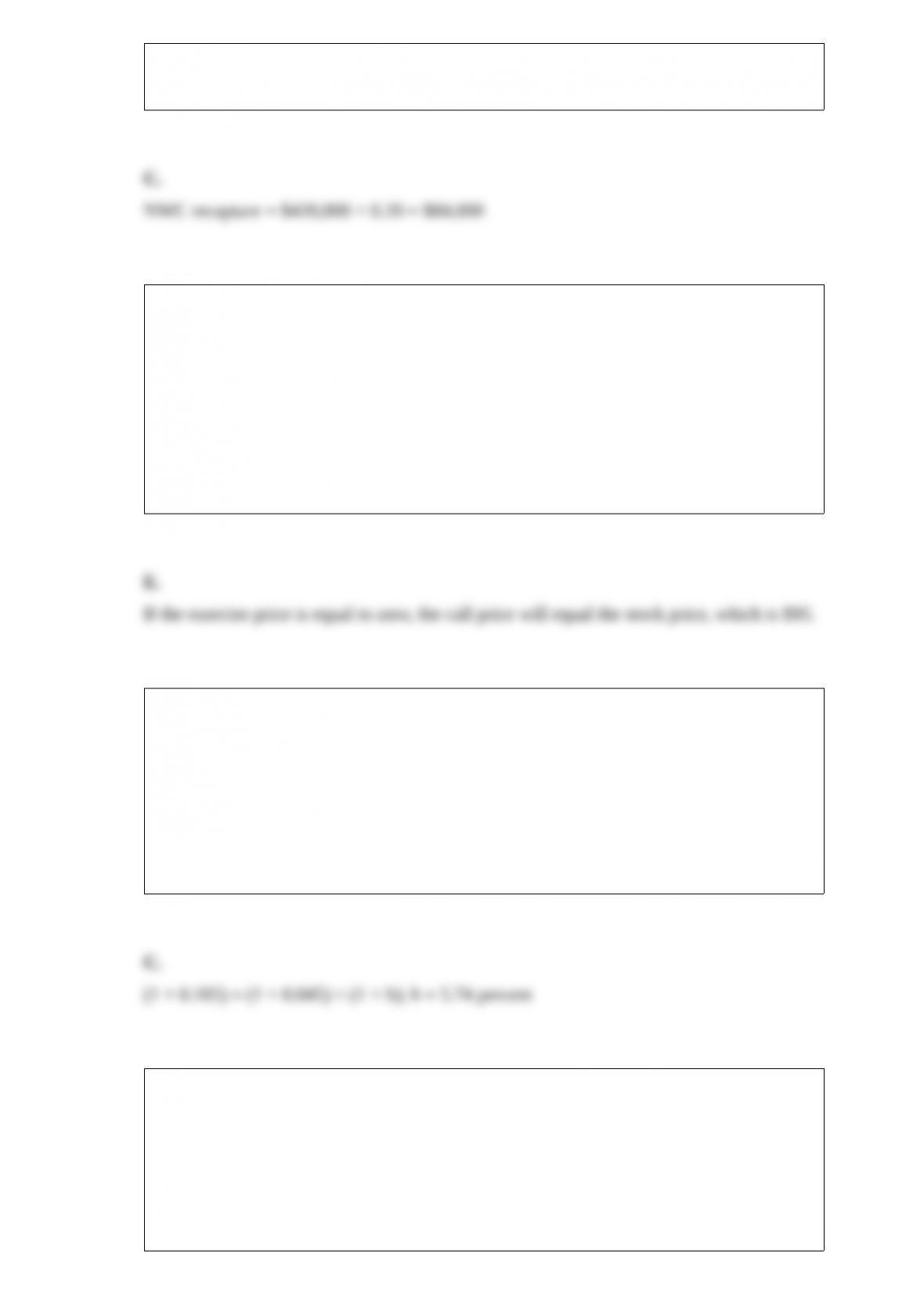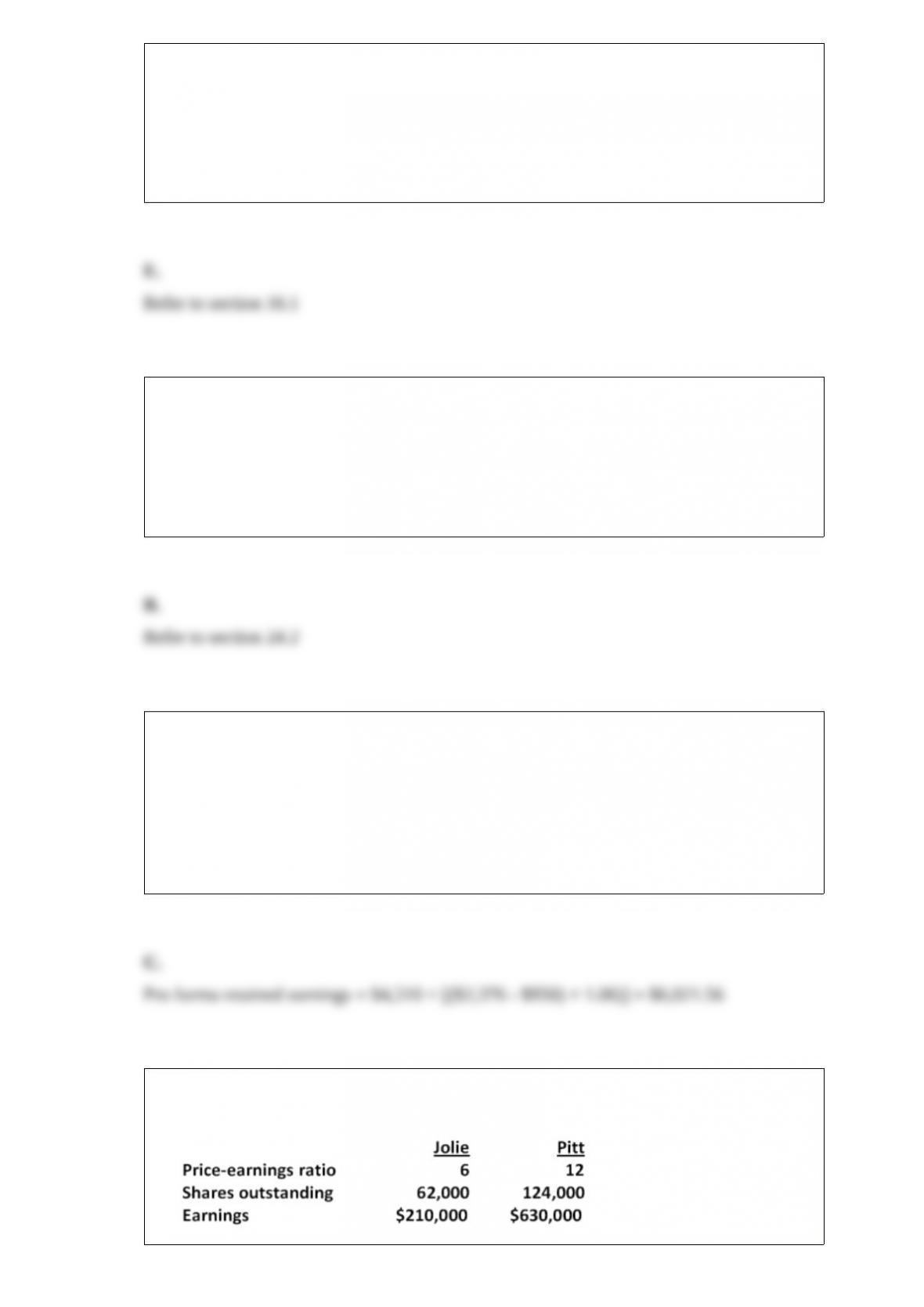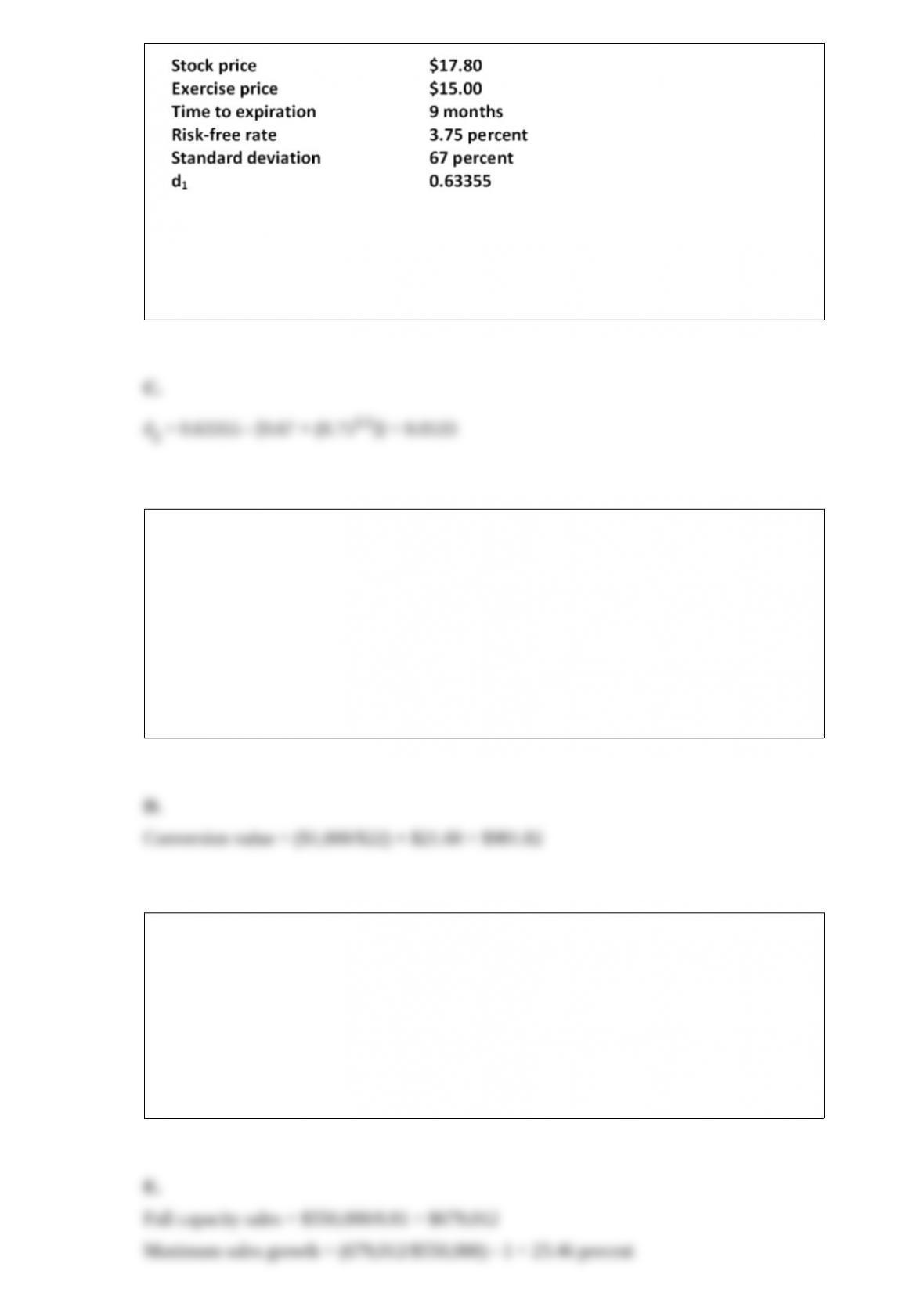Kate is attempting to sell her house for $260,000. Fred lives across the street in an
identical house. Fred recently stated to his wife that Kate's house is probably worth only
$250,000 but that once she sells her house, he would like to put their house on the
market at $285,000 and then move into a condominium. Which one of the following
behaviors applies to Fred?
A. myopic loss aversion
B. house money effect
C. money illusion
D. self-attribution bias
E. endowment effect
A project has a discounted payback period that is equal to the required payback period.
Given this, which of the following statements must be true?
I. The project must also be acceptable under the payback rule.
II. The project must have a profitability index that is equal to or greater than 1.0.
III. The project must have a zero net present value.
IV. The project's internal rate of return must equal the required return.
A. I only
B. I and II only
C. II and III only
D. I, III, and IV only
E. I, II, III, and IV
Keyser Mining is considering a project that will require the purchase of $980,000 in
new equipment. The equipment will be depreciated straight-line to a zero book value
over the 7-year life of the project. The equipment can be scraped at the end of the
project for 5 percent of its original cost. Annual sales from this project are estimated at
$420,000. Net working capital equal to 20 percent of sales will be required to support
the project. All of the net working capital will be recouped. The required return is 16
percent and the tax rate is 35 percent. What is the recovery amount attributable to net
working capital at the end of the project?
A. $21,000
B. $54,600
C. $84,000























